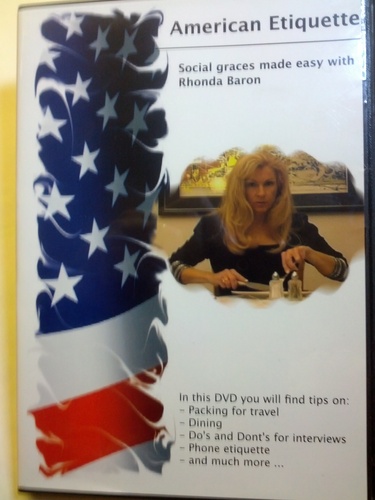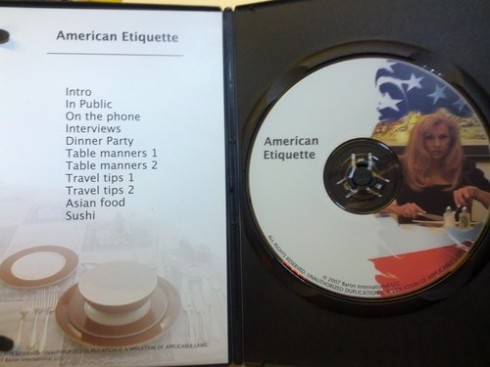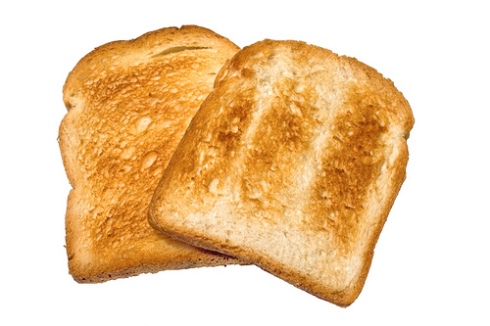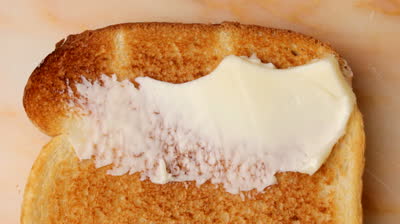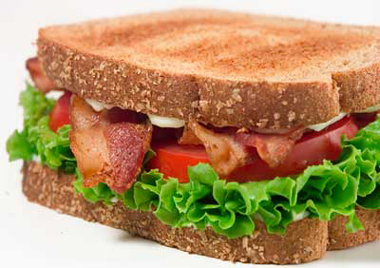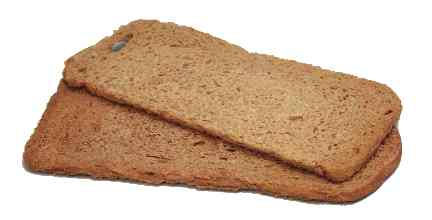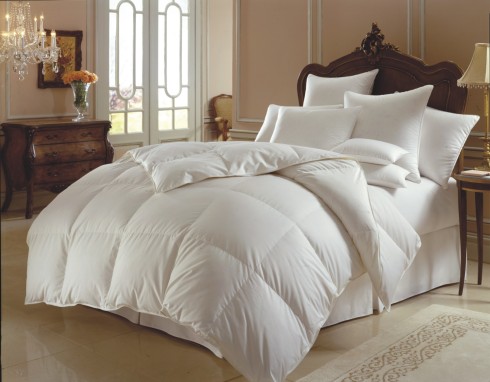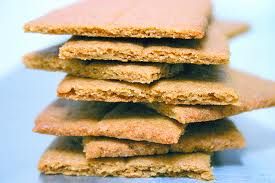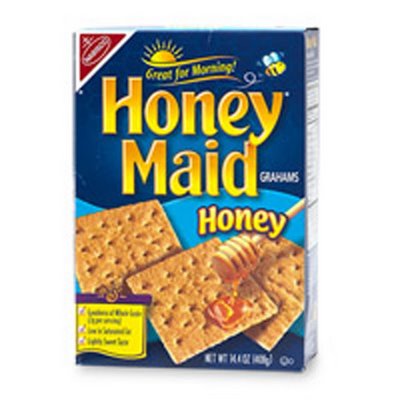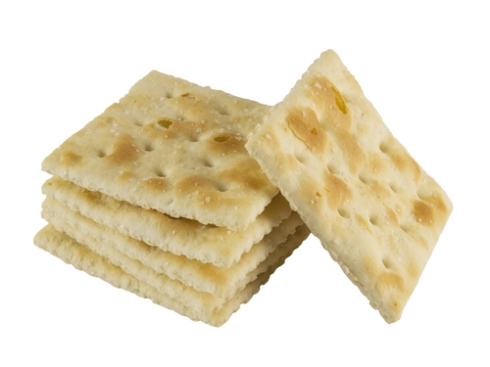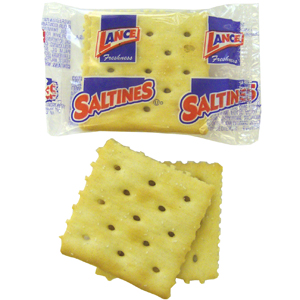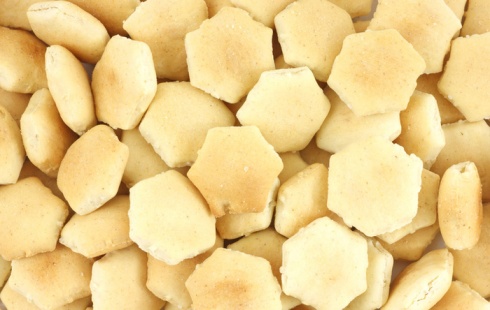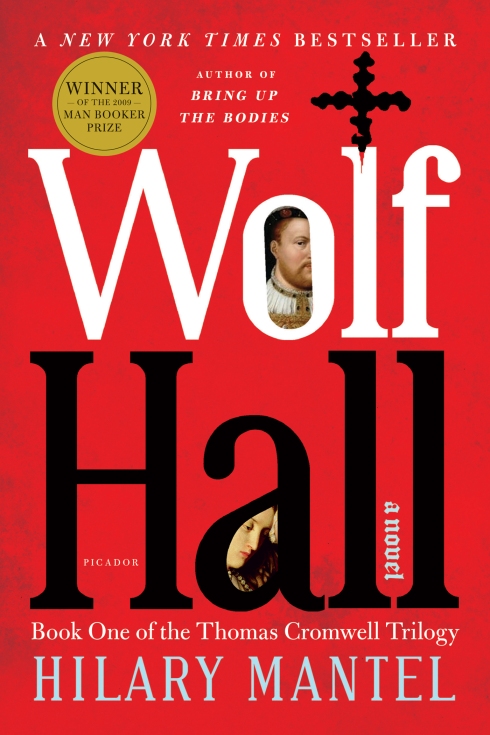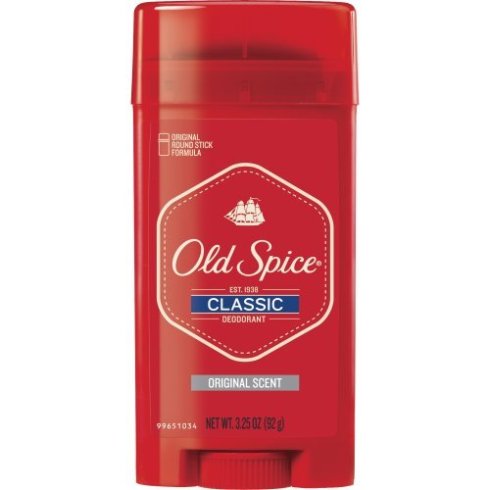158. Washington, DC (pre-1847)
My dear readers may not all be aware that I just moved to Brooklyn, NY. I love it here. I have known since I was little that I belonged in New York. But DC will always be close to my heart. I was born in Columbia Hospital for Women, in the District. I grew up in Upper NW, and then spent the past three years in Petworth. DC is a wonderful, varied place and I love it very much.
Today, I was feeling homesick, and I posted on Facebook that I was missing my old hood. A friend mentioned that DC was a rectangle, and it just seemed like the perfect thing to write about right now.
Washington, DC was founded in 1 791 to be the new capital of the United States of America. Previously, the capital had been in Philadelphia, but Congress decided that the capital of the country should not be in a state. Instead, it should be its own federal district, so no state could have undue influence over what when on in the seat of the federal government. Because of this, DC still to this day has no voting representatives in Congress.
And so Washington, DC was born. It is a city that was planned on a grid, with avenues (named after the states) cutting diagonally through the city. It radiates out from the Capitol, which is located in the center of the city, and it is divided into four quadrants: Northwest, Northeast, Southwest, and Southeast. Politically, there are eight wards of DC voters.
The city was planned to be a perfect square – 7 miles square. It was made with land donated by Maryland and Virginia. However, due to rising tensions between the north and south, Virginia took back its half in 1847. DC is now mostly a square, with a bite taken out.
DC is, historically, a heavily black city. Recently, the percentage of black citizens is down to about 50% of the population, but in the past that percentage has been much higher. Especially east and south of Rock Creek Park, much of the city is pretty densely black. Because of this, there is a vibrant history of distinct black culture in DC.
The neighborhood nearest and dearest to me in Washington is Petworth. I lived there for the past three years. It is a neighborhood “in transition” – gentrifying, but by no means gentrified. Because rent is still relatively low, Petworth is an incredibly vibrant, diverse mix of people, with the population varying drastically in terms of age, race, and class. It’s a pretty amazing community of people, with lots of small local businesses and neighborhood pride. All of my friends still live there, and it’s truly an amazing place.
My dear friend Torie made the above print of a map of Petworth. I love it, and it hangs right above my bed in my apartment.
So, DC, here is my tribute to you. I’m missing and loving you today.
157. Marcella Hazan
My mom lived in Florence, Italy for about a year. We always tease her that she exaggerates it to three years, or ten years, or twenty. But it was obviously a meaningful experience in her life, so we cut her some slack.
The best thing that she got out of Italy, other than some hilarious stories about her Italian boyfriend, Paolo, was that she learned how to cook a lot of great, authentic northern Italian recipes. Pasta with homemade tomato sauce was always a staple in our home. As I got older, I fell in love with Pasta e Fagioli, a northern Italian bean soup. Italian cooking taught me about the importance of a mirepoix to any recipe. Celery, carrots, and onions pretty much make anything taste good.
Marcella Hazan is the queen of northern Italian cooking. Her cookbook, Essentials of Classic Italian Cooking, is a brilliant guide to authentic and delicious Italian food. While her recipes are reliably good, what really makes this book stand out is the way she describes each step of how to make each dish. It is so clear and articulate, and it really sounds like Marcella is in the kitchen with you, talking you through each step of the way.
My two favorite recipes of hers are her Bolognese sauce and her Pasta e Fagioli. They are both super involved, but come out unbelievably delicious. I’ve added a couple of tips/modifications that I use to the recipes denoted by three asterisks (***).
First, Bolognese:
For 4-6 servings
– 1 tablespoon vegetable oil ***I use olive oil.
– 4 tablespoons butter, divided
– ½ cup chopped onion
– 2/3 cup chopped celery
– 2/3 cup chopped carrot
– ¾ pound ground beef chuck ***I usually use 1/3 beef, 1/3 pork, and 1/3 veal. The beef is incredibly flavorful, but the veal adds a delicacy and the pork much needed fat. I don’t remember where I learned that, but I know it’s a classic Italian trick.
– Salt
– Fresh ground black pepper
– 1 cup whole milk
– Whole nutmeg
– 1 cup dry white wine
– 1-½ cups canned imported Italian plum tomatoes, torn into pieces, with juice
– 1-¼ to 1-½ pounds pasta (preferably spaghetti), cooked and drained
– Freshly grated Parmigiano-Reggiano cheese at the table
1. Put oil, 3 tablespoons butter and chopped onion in a heavy 3-½-quart pot and turn heat to medium. Cook and stir onion until it has become translucent, then add chopped celery and carrot. Cook for about 2 minutes, stirring vegetables to coat well.
2. Add ground beef, a large pinch of salt and a few grindings of pepper. Crumble meat with a fork, stir well and cook until beef has lost its raw, red color.
3. Add milk and let simmer gently, stirring frequently, until it has bubbled away completely. Add a tiny grating, about 1/8 teaspoon, fresh nutmeg and stir.
4. Add wine and let it simmer until it has evaporated. Add tomatoes and stir thoroughly to coat all ingredients well. When tomatoes begin to bubble, turn heat down so that sauce cooks at the laziest of simmers, with just an intermittent bubble breaking through the surface.
5. Cook, uncovered, for 3 hours or more, stirring from time to time. While sauce is cooking, you are likely to find that it will begin to dry out and the fat will separate from the meat. To keep it from sticking, add ½ cup water as necessary. At the end of cooking, however, the water should be completely evaporated and the fat should separate from the sauce. Taste and correct for salt.
6. Add remaining tablespoon butter to the hot pasta and toss with the sauce. Serve with freshly grated Parmesan on the side.
And now, Pasta e Fagioli:
The classic bean variety for pasta e fagioli is the cranberry or Scotch bean,
brightly marbled in white and pink or even deep red hues. When cooked, its
flavor is unlike that of any other bean, subtly recalling that of chestnuts.
In the spring and summer it is available fresh in its pod and many specialty
or ethnic vegetable markets carry it. When very fresh, the pods are firm and
brilliantly colored, but even if they are wilted and discolored, the beans inside
are likely to be perfectly sound. You can open one or two pods just to be sure.
Cranberry beans can be frozen with great success and are better than the dried
kind. If your market carries fresh cranberry beans in season, you could buy a
substantial quantity, and freeze the shelled beans in tightly sealed plastic
freezer bags. They can be cooked exactly like the fresh. When fresh cranberry
beans are not available, the dried are a wholly satisfactory substitute and, if
necessary, one may even use the canned. If you can’t find cranberry beans
in any form, you can substitute dried kidney beans. ***I’ve also used dried navy beans or dried great northern beans. Also delish.For 6 servings
– 1/4 cup extra-virgin olive oil
– 2 tablespoons chopped onion
– 3 tablespoons chopped carrot
– 3 tablespoons chopped celery
– 3 or 4 pork ribs, OR a ham bone with some lean meat attached, OR 2 little pork chops *** I use cut up bacon. Easier to come across and totally works.
– 2/3 cup canned imported Italian plum tomatoes, cut up, with their juice, OR
fresh tomatoes, if ripe and firm, peeled and cut up.– 2 pounds fresh cranberry beans, unshelled weight, OR 1 cup dried cranberry or red kidney beans, soaked and cooked as described below * OR 3 cups canned cranberry or red kidney beans, drained
– 3 cups (or more if needed) beef stock OR 1 cup canned beef broth diluted
with 2 cups water ***I usually use only water instead, and more of it, and cook the soup for a bit longer. I modify Marcella’s recipe with Giuliano Bugialli’s.– Salt
– Black pepper, ground fresh from the mill
– Either maltagliati pasta, homemade OR 1/2 pound small, tubular macaroni
– 1 tablespoon butter
– 2 tablespoons freshly grated Parmigiano-Reggiano cheese
* Put the beans in a bowl and add enough water to cover by at least 3 inches.
Put the bowl in some out-of-the-way corner of your kitchen and leave it
there overnight. ***I often use this quick soaking method.When the beans have finished soaking, drain them, rinse them in fresh cold
water, and put them in a pot that will accommodate the beans and enough
water to cover them by at least 3 inches. Put a lid on the pot and turn on
the heat to medium. When the water comes to a boil, adjust the heat so
that it simmers steadily, but gently. Cook the beans until tender, but not
mushy, about 45 minutes to 1 hour. Add salt only when the beans are al-
most completely tender so that their skin does not dry and crack while
cooking. Taste them periodically so you’ll know when they are done.
Keep the beans in the liquid that you cooked them in until you are ready
to use them. If necessary, they can be prepared a day or two ahead of
time and stored, always in their liquid.1. Put the olive oil and chopped onion in a soup pot and turn on the
heat to medium. Cook the onion, stirring it, until it becomes colored
a pale gold.2. Add the carrot and celery, stir once or twice to coat them well, then
add the pork. Cook for about 10 minutes, turned the meat and the
vegetables over from time to time with a wooden spoon.3. Add the cut-up tomatoes and their juice, adjust the heat so that the
juice simmer very gently, and cook for 10 minutes.4. If using fresh beans: Shell them, rinse them in cold water, and put
them in the soup pot. Stir 2 or 3 times to coat them well, then add
the broth/stock. Cover the pot, adjust the heat so that the broth
bubbles at a steady, but gentle boil, and cook for 45 minutes to
1 hour, until the beans are fully tender.If using cooked dried beans or canned: Extend the cooking time
for the tomatoes in Step 3 to 20 minutes. Add the drained cooked or
canned beans, stirring them thoroughly to coat them well. Cook for 5
minutes, then add the broth/stock, cover the pot, and bring the broth/
stock to a gentle boil.5. Scoop up about 1/2 cup of the beans and mash them through a food
mill back into the pot. Add salt, a few grindings of black pepper, and
stir thoroughly.6. Check the soup for density: It should be liquid enough to cook the
pasta in. If necessary, add more broth, or, if you are using diluted
canned broth, more water. When the soup has come to a steady,
moderate boil, add the pasta. If you are using homemade pasta,
taste for doneness after 1 minute. If you are using macaroni pasta,
it will take several minutes longer, but stop the cooking when the
pasta is tender, but still firm to the bite. Before turning off the heat,
swirl in 1 tablespoon of butter and the grated cheese.7. Pour the soup into a large serving bowl or into individual plates, and
allow to settle for 10 minutes before serving. It tastes best when
eaten warm, rather than piping hot.
Both the Bolognese and the soup taste best when left in the fridge overnight before eating – it allows all the flavors to settle and they are definitely tastier.
Give Marcella a try! She is a queen. Everything I have ever made of hers, from a simple pesto to any more involved dish, has been absolutely delicious.
156. Rhonda Baron
My dear, brilliant friend Daniel and I went thrifting together recently. As soon as we walked into our favorite place – Unique Thrift in Merrifield, VA – we saw a table full of these lovely rectangular treasures.
Obviously, we each bought one. A ridiculous looking woman talking about manners? Yes, please (plus, they were 49 cents each – a deal, because they go for $25.99 on Amazon!).
And we were not disappointed. The DVD is a bizarre mixture of “etiquette” advice, which is basically just stuff that bugs Rhonda when people do it at parties. She teaches how to properly eat a hamburger. She teaches how to properly pack a suitcase (apparently she had some history in the travel industry). Most randomly, she teaches how to properly eat and appreciate sushi and other Asian food. And puts on a black wig to do so.
In each scene, Rhonda is totally alone in her depressing, barely-decorated home. There appears to be nothing in her apartment but beige wall-to-wall carpeting. And I’m pretty sure she set up the camera to tape herself. So lonely.
Rhonda is also a snappy dresser. Her outfits range from terrible-80s to terrible-90s. Her interview advice includes images of what suits to wear to an interview – and, boy, are they lovely! And extremely rectangular. Lots of square, padded shoulders and square-toed shoes. A woman after my own heart.
Obviously, Daniel and I decided to do some research on Ms. Baron. Turns out she is from a suburb of DC in Northern Virginia! One of our own. She mentions going into DC like some people might mention going to Paris. Such prestige!
Here’s the best part, though.
Rhonda was visited by Jim Morrison’s ghost.
Yes, folks. The spirit of Jim Morrison paid a special visit to Rhonda. Apparently, Morrison’s parents owned Rhonda’s childhood home before the Barons did.
According to this website, this is what Rhonda had to say about the experience.
“The spirit laid down on the bed. Completely laying down and looking at me like this. It was like a haze. It was like you could look through it.”
Oh, Rhonda. I love you so much. If you read this, please get in touch. I want a private etiquette lesson and chat.
155. Toast
Toast seems, at first glance, like something too ubiquitous to even post about. However, the humble, rectangular toast is such an important part of our culture that I just could not ignore it.
Toast is made by exposing a slice of bread to heat. Toast is an essential breakfast food, often served at restaurants with a breakfast order without even asking for it. Many people enjoy toast with butter, and some even put jam or jelly on top. In England, orange marmalade is a popular toast-topper. The French like Nutella on their toast. Additionally, dry toast is a lovely option when you are sick to your stomach (read: vomiting).
But let’s look deeper at this rectangular breakfast treat. What is the chemical process that turns bread into toast? Wikipedia tells us that toast becomes toast due to a Maillard Reaction. A Maillard Reaction is “a type of non-enzymatic browning…[resulting] from a chemical reaction between an amino acid and a reducing sugar, usually requiring heat.” It was named after a chemist named Louis-Camille Maillard. Ok. Clear enough. Now for the nonsense:
“The reactive carbonyl group of the sugar reacts with the nucleophilic amino group of the amino acid, and forms a complex mixture of poorly characterized molecules responsible for a range of odors and flavors. This process is accelerated in an alkaline environment (e.g., lye applied to darken pretzels), as the amino groups are deprotonated and, hence, have an increased nucleophilicity. The type of the amino acid determines the resulting flavor. This reaction is the basis of the flavoring industry. At high temperatures, acrylamide can be formed.“
If you understand that, God bless you. I certainly don’t. But I figure I must have some science freaks among my readership, and babies, that was for you.
Since I found out I could no longer eat gluten, I’ve really missed toast with butter. Gluten-free bread is pretty universally nasty. But I’ve recently found that when toasted, or made into grilled cheese, it’s palatable. I bought a beautiful red toaster off Amazon for 14.99, and I’ve become a toasting queen. I ate toast with butter for breakfast this morning, in fact! And it was delish.
Part of the charm of toast is that it has other diverse uses than a breakfast staple. Some sandwiches are traditionally made on toast. I have fond memories of eating tuna on toast at the pool with my parents. Just writing about it makes me want one rull bad. BLT sandwiches (Bacon, Lettuce and Tomato, for those who have lived their sad, sad lives without ever experiencing one) are also traditionally made on toast slathered with mayonnaise.
I would be remiss not to address some more unconventional rectangular toasts in this post. First, let’s cover French toast. French toast consists of a slice of bread soaked in egg and pan-fried in butter. It is often eaten with maple syrup. In French, they call it “pain perdu,” meaning “lost bread,” because they used the stale bread that they otherwise would throw away and made it into something edible. Because of the inclusion of the egg-soak, French toast actually has a bit of nutritional value.
Another rectangular toast variation is Melba Toast. Melba Toast used to be one of my favorite snacks. It is super, super dry, and very thin and crunchy. There’s a special flavor to it that is probably also a result of some sort of Maillard Reaction, and I’ve always really liked it. Wikipedia tells us that Melba Toast “is named after Dame Nellie Melba, the stage name of Australian opera singer Helen Porter Mitchell. Its name is thought to date from 1897, when the singer was very ill and it became a staple of her diet. The toast was created for her by chef and fan Auguste Escoffier.”
All in all, the humble, rectangular piece of toast is a staple that has survived through the centuries. It is crunchy and delicious, especially when bathed in butter. Thank you, toast, for sustaining us until lunchtime. Thank you for improving our BLTs. And thank you for settling our tummies when we drank too much the night before.
154. Down Comforters
I can’t sleep without a blanket on top of me. I need that weight to feel safe and secure and relaxed. Ideally, that weight is made up of a down comforter – which is cool in the summer and cozy-warm in the winter. I love me a good down comforter. I don’t like sheets – too much work, and they get too tangled. So I tend to just sleep under my comforter, and feel happy and secure.
Buckley loves a good down comforter, too. He likes the soft, cushy feeling underneath his curled up, sleepy body. But, lately, he’s gotten into the unfortunate habit of chewing on it.
Yes. Buckley, the shittiest-yet-loviest-dog-in-the-world, has destroyed two down comforters of mine. The most significant side effect of a ruined down comforter, other than the cold, is a room. full. of. feathers.
Seriously. So many feathers. I would go out with friends and they’d inevitably remark upon the feathers in my hair or on my clothes. So. Many. Feathers.
Now, I tried to sew these comforters up. So many times. But, eventually, the holes and tears got un-fixable. The first time, I took a comforter from my parents’ house. But this time – the most recent, second time, I had to buy a $170 comforter off Amazon. Until it arrived, I borrowed an ugly, striped duvet from my loving parents. It helped to curb the feathers, but didn’t fix the problem. Now, I’m a Jew. A serious Jew. And spending that kind of money on a quilt hurts, even if I had the cash to spare. Which I don’t.
So, now I have a new (much thinner) fancy down comforter. And Buckley spends the first, dicey half of the night in his crate. I don’t like it, and neither does he. We would both prefer to be cuddling. But, hey. A cozy bed full of down is important, and, sorry Buckley, but we have to get our priorities straight. I love you, but I love my cozy, insulated bed more. Instead, I’ll dream about a warm, furry, red body curled up against mine, since I don’t have any sort of puppy-dog-replacement. Until then, we’ll have to compromise – to keep the peace and the comforter intact.
153. Graham Crackers
Graham crackers, classic rectangular snack, have a fascinating history. We’re going to turn to our good friend Wikipedia to learn about it.
The graham cracker was invented in 1829 by a Presbyterian minister named, predictably, Sylvester Graham. Originally, they were made with graham flour – a course and bland flour. Graham invented these crackers as part of his “Graham Diet,” intended to curb “unhealthy carnal urges, the source of many maladies.” I assume he made them rectangular because the rectangle is the most sensible of the shapes. He was fairly obsessed with masturbation, and convinced that a bland diet could suppress the sexual appetite. Praise Jesus.
Fortunately for our sex lives, graham crackers are now made mostly from white flour, Graham’s great enemy, and sweetened with refined sugar, another great evil. They are often fed to children in daycare or preschool, although why that is, I’m not sure. Probably because they are bland, enjoyed by everyone, and easy on the stomach. Also, they dissolve in your mouth, so no choking hazard (by the way, that dissolving factor was always my favorite part of the Graham cracker experience. I liked to hold the cracker between my tongue and the roof of my mouth until it dissolved. Yum!).
The best graham crackers I’ve ever had are sold at Modern Times Coffeehouse, underneath Politics and Prose bookstore in DC. They are made by Pollystyle, a local bakery owned by a lovely woman named Polly. They’re perfectly slightly crunchy, only slightly sweet, and unbelievably delicious. I miss them dearly. They used to taste great with a cup of coffee (something else I’ve given up – it makes my nose and gums itchy). So, so yum.
One great use of the graham cracker is a graham cracker crust. Although a pie is (rarely) rectangular, it is still a delicious, if inferior, treat. The graham cracker crust is a classic crust on a cheesecake. I love it for chocolate pudding pie. And I’ve recently found it to be a delicious crust for a key lime pie. It’s usually made by mixing butter (and maybe some salt) with craham cracker crumbs, which is then pressed into a pan, and baked for a bit. Very yum.
Perhaps the most culturally significant use of the graham cracker is in the classic campfire treat called the S’more. The rectangular S’more is made of a toasted marshmallow (I’ve always preferred mine charred) and a bit of (rectangular) chocolate bar squished between two graham cracker squares. It’s not particularly gourmet, but anyone who’s had one would acknowledge that the S’more is extremely sweet but pretty delicious.
Thank you, Reverend Graham, for developing this delicious rectangular treat. Sorry it hasn’t curbed my libido.
152. Saltines (But Not Oyster Crackers)
Ah, saltines. Food of the Gods, when the Gods have the flu. Or feel like eating some soup. Bland? Sure. But salty? Absolutely. So salty. The pretzel ain’t got shit on our friend the saltine when it comes to the salt factor.
Now, I wasn’t allowed to have junk food growing up. Remember Combos? Those were a no-go. Bugles? No way, Jose. And don’t even start with me on Doritos. So, I ate a lot of saltines.
And thank God for that.
My parents must have foreseen my personal values and standards from an early age. After all, what do those junky snacks all have in common?
They’re not rectangles.
That’s right, folks. Not. Rectangles. So, fuck them, they have no place in this blog.
Now that we’ve covered that, let’s get back to the rectangular topic on hand – the saltine.
According to our helpful pal Wikipedia, a saltine is “a thin, usually square cracker made from white flour, shortening, yeast, and baking soda…lightly sprinkled with coarse salt.”
The saltine was the first cracker to be leavened with baking soda. It was invented in 1876 by F.L. Sommer and Company, a company based out of Missouri. At first it was called the “Premium Soda Cracker,” due to that baking soda, and later became called “Saltines,” due to its use of baking salt. The saltine caught on brilliantly in America, and Sommer’s business eventually merged with other companies to become part of Nabisco in 1898. Now you can find Saltines in America under the brand “Premium,” by Nabisco.
Keep educating us, Wikipedia.
After the term “saltine” began to be used to refer to all crackers of this sort, Nabisco lost its trademark. In 1907, the word “saltine” was in the Merriam-Webster dictionary, defined as, ‘”a thin crisp cracker usually sprinkled with salt.”‘
And there we go. A brief history of the saltine.
So how has the saltine permeated pop culture?
Well, most restaurants serve a plastic-wrapped packet of two saltines with soup. The idea is that you crumble or dip the saltine into the soup, making it perfectly water-logged and delicious. I have fond memories of this treat from my glutenous days.
[I must include a warning here. The saltine has a hexagonal cousin, the oyster cracker. These babies are also often made by Premium, the same company that makes most saltines in the US, and are often served with soups. Do not be fooled. Oyster crackers, while similar, are a far inferior, unquadrilateral product. In other words, they need to back the fuck off the territory of the saltines – the soups of America deserve the best.]
Saltines are also often recommended to people with stomach viruses. They are extremely bland, and are very easy on the digestive system. Also, delicious, but usually only on the way down.
Additionally, there exists something called The Saltine Challenge. The goal sounds simple – eat 6 saltines in 60 seconds without drinking anything. Just six crackers? In 60 seconds? What pussy can’t do that? BUT WAIT. Saltines have a secret power, and that power is efficiently soaking up the saliva in the mouth. So, after chewing the saltines, the resultant crumbs are impossible to swallow, and many people fail. Oh, saltines, you sneaky bastards.
In conclusion, saltines are an important and valuable part of American culture. They have a proud history of feeding the sickly and soaking up the soups of our great nation. Thank you, saltines. It’s been so, so real.
151. Wolf Hall
Wolf Hall, by Hilary Mantel, is a beautiful work of historical fiction. It is the first book of a trilogy about Thomas Cromwell, an important adviser to Henry VIII of England during his reign. Unusually for historical fiction, Wolf Hall won the Man Booker Prize – an extremely prestigious award in the world of contemporary fiction (Mantel’s second book in the series, Bring Up the Bodies).
Wolf Hall begins chronicling Henry VIII’s reign at the beginning of the downfall of Henry’s first wife, Catherine of Aragon, and the rise of his second, Anne Boleyn. It chronicles Henry’s split from the Catholic church, and the threat of the protestant reformation. It also focuses on the political atmosphere of the time. There are so many different issues in play that it makes for such fascinating history. The book ends at the beginning of the fall of Anne Boleyn, after she fails to produce a male heir, and as Henry gets madder and more power hungry. Throughout, we also follow the personal life of Thomas Cromwell, a very smart and cunning man who knows how to run Henry’s court successfully.
This book is truly brilliant. The writing is fantastic – colorful and unbelievably gripping. I was thrilled that it was as long as it was, because I didn’t want it to be over. But what really makes Wolf Hall so interesting is that it paints Thomas Cromwell, a man historically depicted as a villain, in a very likable and sympathetic light. I have so much affection for the fictional Cromwell that I dread his inevitable downfall in the third book – something I know from historical context, so not a spoiler.
I highly recommend this book. It’s not gorgeous, high brow literature, perhaps – not James Joyce – but it is really fun to read, and definitely well written. The subject matter is hard to mess up, because it is so fascinating, and Mantel does a brilliant job with it.
150. My New Oriental Rug
My friend Daniel (of Manhattan Nest) is the most brilliant thrifter I’ve ever met. Now, I love my thrifting. I don’t say that easily. But he has an eye like nobody else in the world.
A couple of weeks ago, we were on the Upper West Side, and we wandered into an antiques store. In the back of the store, hidden under a cupboard and several chairs, was a filthy oriental rug. But Daniel spotted it immediately. The men in the store offered it to him first for $125, which he bargained down to $100. Then they felt bad – as the rug was very dirty, and had some tears – and offered him $45. He was ecstatic – he got a rug that he loved for dirt cheap. And it ended up beautiful, if a little worn, once he vacuumed it.
I grew up surrounded by oriental rugs. My mom loves them, and so do I. Our favorite type is Heriz, from Northwest Iran, which is an often more geometric style. The colors are so rich and beautiful, and the patterns just exquisite. However, these are not cheap when bought “new.” Of course, the best rugs are not new, per se, but old and in fantastic condition. Oriental rugs are basically put down in the streets for camels to pee on.
So, inspired by Daniel, I set out to find myself a cheap rug on ebay. I found this one for $65, including shipping. It’s a bit worn, but really very pretty. I have it in my kitchen – I apologize for the terrible lighting.
149. Deodorant
I’m kind of obsessed with our culture’s obsession with the antiseptic and over-clean. I don’t shower every day, because it’s bad for my skin and my hair. Both look much better with a little bit of oil. I’ve also read that some bacteria lives in the oils in our skin and keeps us healthy.
I also hate scented products. I love one or two sprays of my fancy, subtle, French perfume, but no more. I believe that no one should be able to smell your perfume unless they’re within kissing distance. I hate men in cologne – I’m a firm believer that Old Spice Deodorant mixed with natural man-smell is the best in the world.
Now, onto the subject of deodorants (in their rectangular packaging) and natural man-smell.
I recently read this amazing article about how deodorant and obsessive attention to smelling good became popular in the early 20th century. Before that, no one cared about smelling clean all the time. People covered up with perfume (generally fancy and French, thank you very much), but no one had been told that they had to be self-conscious about every natural smell they put out.
Cue the brilliance of the modern advertising movement. Ads were placed shaming women into insecurities about how they smell. Men came later, but soon experienced the same smell-shame that women did.
I’m going to go out on a limb here. I LIKE how men smell. For a little while, I dated a man who didn’t wear deodorant. He showered every day, so he was clean, but had a little bit of B.O. smell going on. It took some getting used to, but eventually, I really liked it. He smelled like a body. And our bodies should smell like bodies! And here is where I get back on my soap box.
Bodies are bodies. We shouldn’t pretend otherwise. Sex should smell like sex, not soap. People shouldn’t shower every day, compromising their health and the health of their skin and hair. Men and women shouldn’t load on perfume and cologne to cover up any natural scent that they may have. We need to reclaim the sensual power of the way we smell and taste when we’re a little bit dirty. Not saying we should embrace the gross, but a little bit of natural odor is, well, natural, and should be more acceptable. And, while I’m not ready to give up my deodorant yet, I like the idea that we could.




